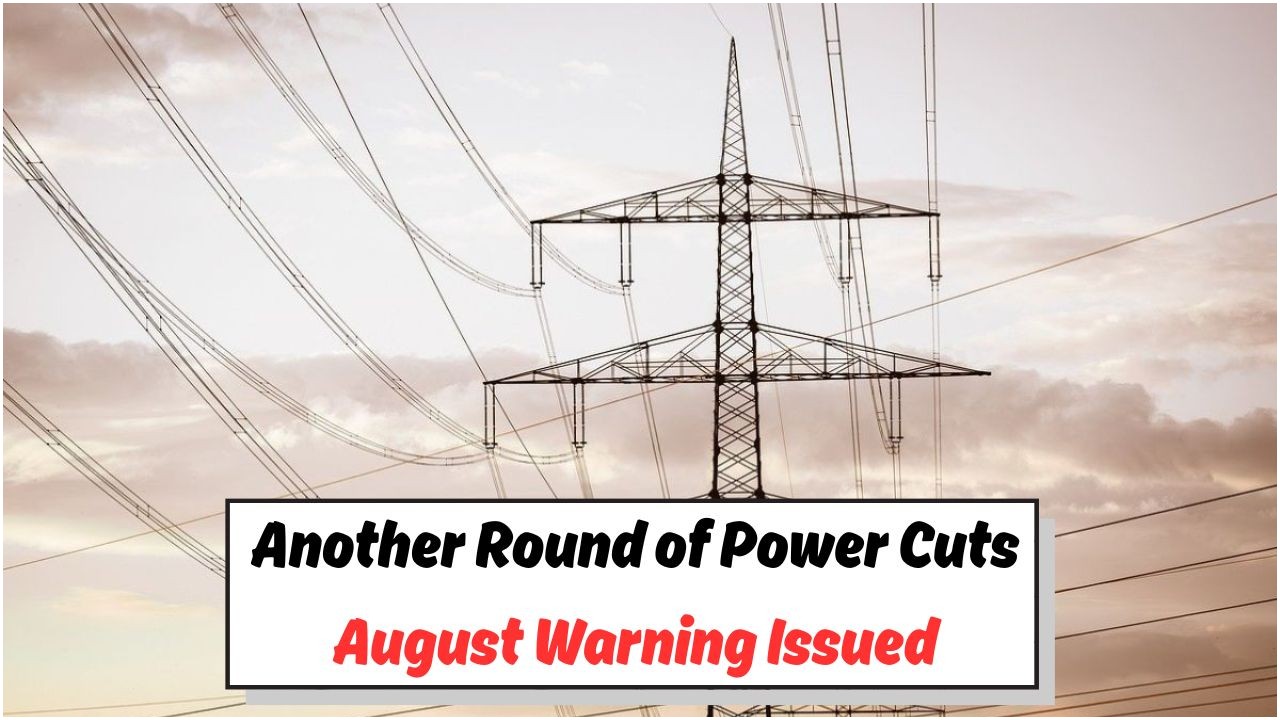Eskom’s August Load Shedding Warning: South Africa’s power utility, Eskom, has issued a warning about potential load shedding in August. This has raised concerns among citizens about the reliability of the country’s electricity supply and whether this is a harbinger of more significant issues. With the cold winter months drawing to a close, Eskom’s announcement has left many wondering if the power cuts will continue or even intensify. Understanding the reasons behind this warning is crucial for South Africans as they brace themselves for possible disruptions in their daily lives.
Understanding Eskom’s Load Shedding Announcement
Load shedding is a familiar term to South Africans, synonymous with power outages and disrupted routines. Eskom’s recent warning comes as part of its routine communication to manage expectations and prepare the public for potential electricity shortages. This practice helps prevent a total grid collapse by systematically reducing the load on the power system. Despite being a preventive measure, load shedding has significant impacts on businesses, industries, and households across the nation.
- Avoiding complete grid failure
- Managing electricity demand during peak hours
- Ensuring fair distribution of available power
- Reducing pressure on aging infrastructure
- Balancing power supply and demand
- Preventing equipment overloads
- Maintaining system stability
Factors Contributing to Eskom’s Warning
Several factors contribute to Eskom’s load shedding warnings. One primary reason is the aging infrastructure, which struggles to keep up with demand. Maintenance and repair work on power stations also play a significant role in the power shortages. Additionally, unexpected breakdowns and technical issues can exacerbate the situation, leading to more frequent outages.
- Infrastructure Age: Many power plants are decades old and require constant maintenance.
- Maintenance Delays: Scheduled maintenance often faces delays due to resource constraints.
- Breakdowns: Unplanned outages occur due to equipment failure.
- Fuel Supply Issues: Coal supply disruptions affect power generation.
- Weather Conditions: Extreme weather can impact power station operations.
- Financial Constraints: Limited budgets restrict repair and upgrade work.
- Increased Demand: Cold weather increases electricity usage.
Impact of Load Shedding on Daily Life
Load shedding significantly impacts everyday life in South Africa. For businesses, it means lost productivity and potential revenue losses. Households face disruptions in routine activities, from cooking meals to completing homework. Additionally, essential services like healthcare and public transport rely heavily on a stable power supply, meaning any disruption can have dire consequences.
| Sector | Impact | Example |
|---|---|---|
| Business | Loss of productivity | Retail shops closing early |
| Education | Interrupted learning | Schools closing for the day |
| Healthcare | Compromised services | Hospital equipment failures |
| Transport | Delays and disruptions | Train schedules affected |
| Households | Daily routine disruption | Cooking and cleaning delays |
| Public Safety | Increased risk | Traffic lights not working |
| IT & Data | Data loss risk | Server shutdowns without backup |
Future Outlook for Eskom and Load Shedding
Looking ahead, Eskom is working towards mitigating the impact of load shedding. The company’s strategies include investing in renewable energy sources and enhancing the efficiency of current power stations. However, these efforts require time and significant financial investment. The government is also involved in exploring alternative energy solutions to reduce dependency on Eskom’s aging infrastructure.
| Strategy | Objective | Timeline |
|---|---|---|
| Renewable Energy | Increase sustainable power | 2025 |
| Infrastructure Upgrade | Enhance grid reliability | Ongoing |
| Public-Private Partnerships | Encourage investment | 2023-2030 |
| Energy Efficiency Programs | Reduce consumption | Immediate |
| Alternative Energy Sources | Diversify supply | 2024 onwards |
| Maintenance Improvement | Reduce breakdowns | 2023-2026 |
| Community Awareness | Promote conservation | Continuous |
| Financial Restructuring | Stabilize funding | 2023-2025 |
| Load Shedding Schedules | Enhance predictability | Immediate |
Actions for South Africans Amid Load Shedding
South Africans can take proactive measures to minimize the inconvenience of load shedding. Being prepared and informed can alleviate the stress associated with power outages.
- Stay updated with load shedding schedules
- Invest in backup power solutions like generators or inverters
- Utilize non-perishable food items
- Charge essential electronics in advance
- Plan activities around power availability
- Use energy-efficient lighting and appliances
- Participate in community energy-saving initiatives
- Stay connected with neighborhood support groups
Government’s Role in Addressing Load Shedding
The South African government plays a crucial role in addressing the load shedding crisis. By implementing policies that encourage energy diversification and infrastructure investment, the government can help reduce the frequency and impact of power outages.
- Implementing energy policies that support renewables
- Facilitating public-private partnerships in energy sector
- Providing incentives for businesses to invest in clean energy
- Ensuring transparency in Eskom’s operations and financial management
- Encouraging community-based energy solutions
- Promoting research and development in energy technologies
FAQ: Eskom Load Shedding and Its Implications
Here are some frequently asked questions about Eskom’s load shedding and what it means for South Africans.
Why does Eskom implement load shedding?
- Load shedding prevents the national grid from collapsing by reducing demand during peak times.
- It helps manage the limited electricity supply effectively.
- It ensures fair distribution of electricity across regions.
How can I stay informed about load shedding?
- Check Eskom’s website for updates.
- Download the EskomSePush app for real-time alerts.
- Follow Eskom’s social media channels for notifications.
What can businesses do to mitigate the impact of load shedding?
- Invest in backup power systems like UPS or generators.
- Implement flexible work arrangements during outages.
- Utilize energy-efficient technology and equipment.
Exploring Alternative Energy Solutions
As South Africa continues to grapple with load shedding, exploring alternative energy solutions becomes increasingly crucial. This includes expanding the use of solar, wind, and other renewable sources to reduce reliance on traditional power infrastructure.
| Energy Solution | Benefits | Challenges | Adoption Rate |
|---|---|---|---|
| Solar Power | Abundant, sustainable | High initial cost | Growing |
| Wind Energy | Renewable, low emissions | Site-specific | Moderate |
| Hydropower | Reliable, efficient | Environmental impact | Limited |
| Biogas | Reduces waste, generates power | Infrastructure needed | Low |
| Geothermal | Continuous supply | Location dependent | Minimal |
Stay Prepared and Informed
Being prepared and informed is key to managing the effects of load shedding. By staying updated on Eskom’s plans and proactively taking measures, South Africans can reduce the disruption caused by power outages.
Explore alternative energy sources to cut down dependency on the grid.
Participate in community initiatives to promote energy conservation.
Support government efforts to improve energy infrastructure.
 Eskom's New Plan Signals Potential Stage 6 Power Cuts in August: Are You Prepared for the Emergency?
Eskom's New Plan Signals Potential Stage 6 Power Cuts in August: Are You Prepared for the Emergency?
Educate yourself on energy-saving practices for a sustainable future.










